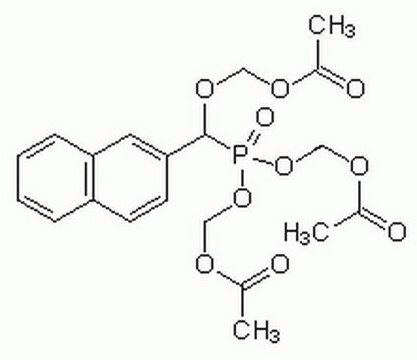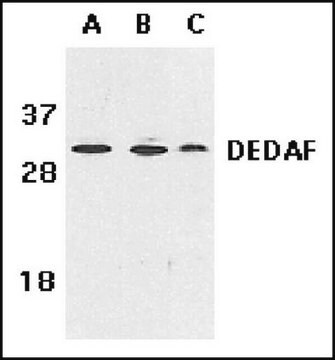ABE2864M
Anti-Meis1
from rabbit
Synonym(s):
Homebox protein Meis1
About This Item
Recommended Products
biological source
rabbit
Quality Level
antibody form
purified antibody
antibody product type
primary antibodies
clone
polyclonal
species reactivity
mouse, human
packaging
antibody small pack of 25 μg
technique(s)
ChIP: suitable (ChIP-chip)
immunofluorescence: suitable
western blot: suitable
isotype
IgG
NCBI accession no.
target post-translational modification
unmodified
Gene Information
human ... MEIS1(4211)
mouse ... Meis1(17268)
General description
Specificity
Immunogen
Application
Epigenetics & Nuclear Function
Immunofluorescence Analysis: A representative lot detected Meis1 in adjacent stage (St) 41 sagittal hindbrain and eye sections (Mercader, N., et. al. (2005). Development. 132(18):4131-42).
Western Blotting Analysis: A 1:800 dilution from a representative lot detected Meis1 in HEK293T cells transfectd with Meis1a (Courtesy of Dr.Valeria Azcoitia and Dr. Miguel Torres).
Chromatin Immunoprecipitation (ChIP) Analysis: A representative lot detected Meis1 in Chromatin Immunoprecipitation applications (Penkov, D., et. al. (2013). Cell Rep. 3(4):1321-33).
Western Blotting Analysis: A representative lot detected Meis1 in proximal, distal, and RA-treated distal blastemas (Mercader, N., et. al. (2005). Development. 132(18):4131-42).
Quality
Western Blotting Analysis: 1 µg/mL of this antibody detected Meis1 in 10 µg of HeLa cell lysate.
Target description
Physical form
Storage and Stability
Handling Recommendations: Upon receipt and prior to removing the cap, centrifuge the vial and gently mix the solution. Aliquot into microcentrifuge tubes and store at -20°C. Avoid repeated freeze/thaw cycles, which may damage IgG and affect product performance.
Other Notes
Disclaimer
Not finding the right product?
Try our Product Selector Tool.
Storage Class Code
12 - Non Combustible Liquids
WGK
WGK 2
Flash Point(F)
Not applicable
Flash Point(C)
Not applicable
Certificates of Analysis (COA)
Search for Certificates of Analysis (COA) by entering the products Lot/Batch Number. Lot and Batch Numbers can be found on a product’s label following the words ‘Lot’ or ‘Batch’.
Already Own This Product?
Find documentation for the products that you have recently purchased in the Document Library.
Our team of scientists has experience in all areas of research including Life Science, Material Science, Chemical Synthesis, Chromatography, Analytical and many others.
Contact Technical Service








